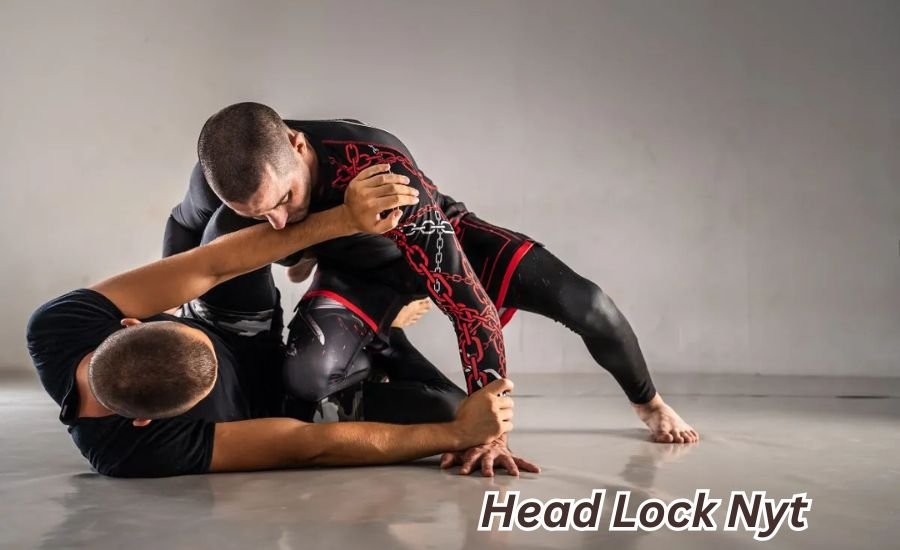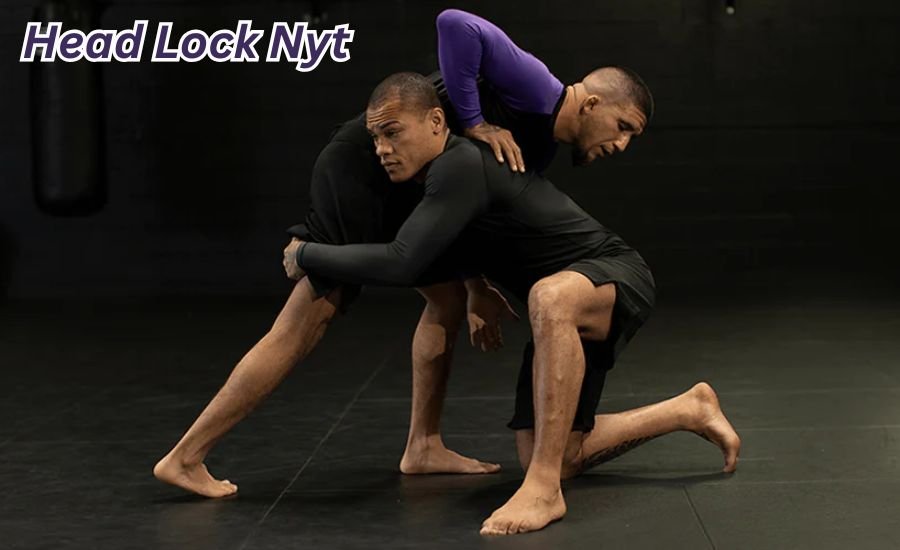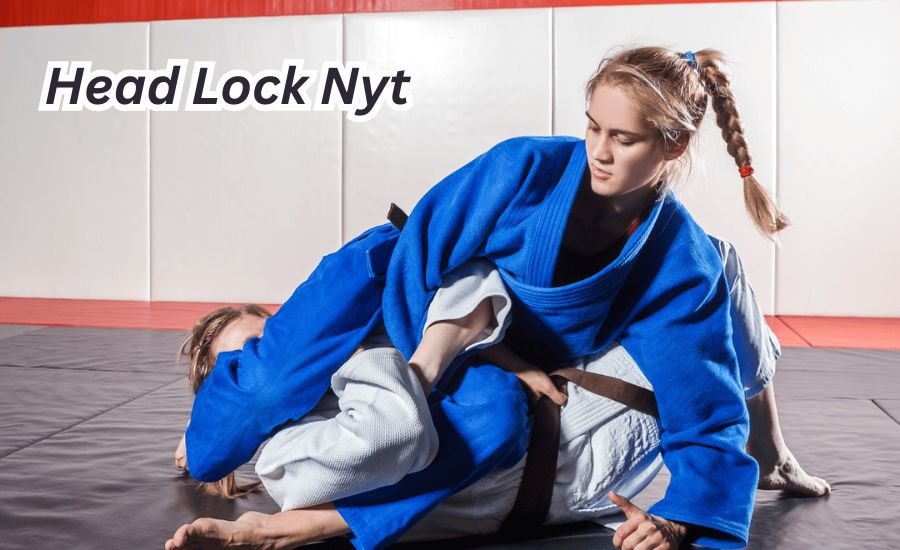The head lock NYT is an essential grappling technique widely used in wrestling and mixed martial arts (MMA). This move involves a fighter wrapping their arm around an opponent’s head, providing significant control and leverage during a match. The head lock not only helps in subduing an opponent but also opens up various tactical opportunities, such as executing takedowns or setting up submission holds. For both beginners and seasoned athletes, mastering the head lock is vital for enhancing overall performance in the ring.
At Wiki247, we understand the importance of effective grappling techniques. Gaining proficiency in the head lock is not just about strength; it requires precision, timing, and an awareness of body mechanics. In this blog post, we will delve into the different variations of the head lock, its importance in combat sports training, and practical tips for perfecting this key maneuver. Whether you’re an aspiring wrestler or a mixed martial artist, understanding and applying head locks can significantly contribute to your grappling success.
What is a Head Lock and Why is it Important in Combat Sports?
A head lock is a grappling move where a fighter wraps their arm around the opponent’s head. This technique is significant for several reasons. First, it enables the fighter to maintain control over their opponent’s movement, making it difficult for them to escape. Second, a well-executed head lock can lead to takedowns and submissions, which are pivotal in competitive fighting. Mastering this technique is essential for anyone looking to excel in combat sports.
Being skilled in head locks showcases a fighter’s technical ability and enhances overall performance. Fighters who effectively apply head locks often gain the upper hand in matches, making this skill vital for success in the ring.
Different Types of Head Locks: A Breakdown
Head locks come in various forms, each serving unique purposes in grappling. The basic head lock is typically the first technique beginners learn, providing essential control but requiring practice to master. A popular variant is the cross-face head lock, which adds pressure across the opponent’s face, making it challenging for them to maneuver.
Advanced variations, like the guillotine choke, utilize the head lock as a setup for submissions. Each type has its specific applications, and understanding these differences equips fighters with More Tools for versatility in the ring.
Step-by-Step Guide to Executing a Perfect Head Lock
To effectively execute a Head Lock NYT, follow these steps:
Step 1: Positioning Yourself
- Stand Firmly: Start in a balanced stance, feet shoulder-width apart.
- Close the Distance: Move closer to your opponent to minimize their escape options.
Step 2: Initiating Contact
- Reach for the Head: Use one arm to wrap around your opponent’s neck.
- Use Your Body: Turn your body slightly to the side to create leverage.
Step 3: Establishing the Grip
- Lock Your Hands: Grab your own wrist or forearm with your other hand, forming a tight grip.
- Maintain a Relaxed Grip: Ensure the grip is firm but not overly tight to avoid losing control.
Step 4: Positioning Your Body
- Align Your Hips: Keep your hips aligned with your opponent’s to maintain balance.
- Engage Your Legs: Position your legs to provide stability, keeping your knees slightly bent.
Step 5: Applying Pressure
- Pull Down Gently: Use your grip to pull your opponent’s head down while keeping your body close.
- Use Your Body Weight: Lean your weight into the hold, ensuring your opponent is off-balance.
Step 6: Controlling the Opponent
- Anticipate Movements: Keep an eye on your opponent’s reactions and adjust your position accordingly.
- Maintain Awareness: Be aware of your surroundings and potential counters from your opponent.
Step 7: Finishing the Technique
- Stay Balanced: As you maintain the head lock, adjust your stance to remain stable.
- Look for Opportunities: Watch for openings to transition into other moves, such as takedowns or submissions.
Step 8: Practice and Refine
- Rehearse Regularly: Consistent practice will help you refine your technique and build confidence.
- Seek Feedback: Work with a partner or coach to receive constructive feedback on your execution.
Tips for Success
- Stay Relaxed: Avoid tensing up; stay calm to react quickly to your opponent’s movements.
- Focus on Technique: Prioritize proper form over brute strength to effectively control your opponent.
Common Mistakes to Avoid When Using a Head Lock
Many beginners make errors while attempting to apply a head lock. One frequent mistake is gripping too tightly, which can lead to loss of control. It’s important to maintain a firm yet relaxed grip to keep your balance.
Here are additional common mistakes to avoid when using a head lock:
- Lack of Awareness of Surroundings: Beginners often become too focused on applying the head lock without paying attention to their surroundings. This can lead to vulnerabilities, especially if there are other opponents or objects nearby.
- Neglecting Breathing: Holding your breath or tensing up while applying a head lock can hinder your performance. Remember to breathe steadily, which helps maintain your composure and strength.
- Ignoring Your Opponent’s Reactions: Failing to observe how your opponent is reacting can result in losing control. Watch for signs of their next move, as this will help you adjust your grip and position accordingly.
- Overextending the Grip: Extending your arms too far can compromise your balance and strength. Keep your elbows close to your body to maintain a strong, stable position.
- Not Using Your Legs: Many beginners forget to engage their legs effectively. Strong leg positioning can help anchor your body and provide the leverage needed to maintain control over your opponent.
- Rushing the Application: Hurrying to apply the head lock can lead to sloppy technique. Take the time to position yourself properly before executing the move to ensure effectiveness.
- Failure to Practice: Not practicing the head lock regularly can lead to a lack of confidence and proficiency. Consistent practice is essential for mastering the technique.
How to Incorporate Head Locks into Your Training Regimen

Integrating the head lock NYT into your training routine is crucial for skill development. Start by practicing the technique during warm-ups to familiarize yourself with the movements.
1. Warm-Up with Grip Strength Exercises
Before starting any practice, it’s essential to warm up your body and focus on grip strength. Include exercises like towel wringing, plate pinches, and dead hangs to prepare your hands and forearms for the demands of head locks.
2. Drill the Technique Regularly
Set aside specific sessions in your training for drilling the head lock technique. Begin with basic movements and gradually increase complexity as you gain confidence. Partner drills can help reinforce muscle memory and improve your execution under different scenarios.
3. Integrate into Sparring
During sparring sessions, consciously look for opportunities to apply head locks. This will help you practice timing and positioning in a dynamic environment. Make it a goal to execute head locks at least a few times per session, analyzing what works and what doesn’t.
4. Use Resistance Training
Incorporate resistance bands or weights when practicing head locks to simulate the resistance you might face during a match. This added challenge can help you build strength and improve your technique under pressure.
5. Seek Feedback
After practicing head locks, ask your coach or training partners for feedback. They can provide insights on your technique and help you identify areas for improvement, such as grip, body positioning, and leverage.
6. Watch Instructional Content
Supplement your training with instructional videos focused on head locks. Resources like BJJ Fanatics and YouTube offer various tutorials and tips from experienced fighters, which can deepen your understanding of the technique.
7. Reflect and Adjust
After each training session, take a few moments to reflect on your performance with head locks. Note any challenges you faced or successes you achieved. Use this information to adjust your focus in future training sessions.
You May Also Like: Gbas Shooting Shirts
The Role of Head Locks in Self-Defense Scenarios
Head locks are also valuable in self-defense situations. In a confrontation, being able to apply a head lock can help control an aggressor without excessive force.
Training in head locks as part of a self-defense regimen boosts confidence. You will learn to react swiftly and effectively in stressful situations. While head locks can be useful, it is crucial to apply them responsibly.
Analyzing Famous Matches: The Impact of Head Locks
Throughout the history of wrestling and MMA, the head lock NYT has been a game-changer. Many champions have used this technique to secure victories. By analyzing famous matches, you can gain insights into when and how to effectively apply a head lock.
Understanding these instances can inspire regular practice. Observing the role of head locks in professional competitions highlights their significance in training.
Head Lock NYT: Tips from the Pros
Learning from experienced fighters can greatly enhance your head lock skills. Many professionals emphasize the importance of grip strength, which allows for better control during application.
Here are additional tips from the pros to enhance your head lock skills:
- Focus on Timing and Positioning:
- Initiate the head lock when your opponent is off-balance or distracted to gain better control.
- Practice Different Entry Points:
- Explore various angles for applying a head lock, whether from standing or grounded positions, to enhance versatility.
- Drill with Sparring Partners:
- Engage in drills with partners to receive real-time feedback and refine your technique in a controlled environment.
- Study Successful Matches:
- Watch videos of skilled fighters using head locks to learn their strategies and transitions.
- Stay Conditioned:
- Incorporate strength training and cardio into your routine to improve stamina and strength for longer matches.
- Stay Mentally Prepared:
- Use visualization techniques to imagine successfully executing head locks, boosting confidence during actual matches.
Strengthening Your Grip: Exercises to Enhance Your Head Lock
To perform a head lock effectively, developing grip strength is essential. Consider exercises like the farmer’s walk, where you carry weights over a distance, to build muscle in your hands and forearms.
To enhance your grip strength for executing a head lock effectively, you can incorporate several additional exercises into your training routine:
1. Dead Hangs
Dead hangs involve hanging from a pull-up bar for an extended period. This exercise strengthens your grip, forearms, and shoulders. Aim to hold on for as long as possible, gradually increasing your time as your grip improves.
2. Plate Pinches
Plate pinches are a great way to build grip strength. Simply grab two weight plates and pinch them together with your fingers, holding for as long as you can. This exercise targets your fingers and forearms, crucial for a strong grip during a head lock.
3. Wrist Rolls
Using a wrist roller can significantly enhance your forearm strength. This tool consists of a weighted rope attached to a stick. By rolling the stick to raise and lower the weight, you engage your forearms and grip.
4. Finger Curls
Finger curls involve holding a weight with your fingertips and curling it upwards. This isolates your grip muscles, making it beneficial for strengthening the specific muscles used in a head lock.
5. Gripper Exercises
Using a hand gripper allows you to focus directly on your grip strength. These devices come in various resistance levels, so you can progressively increase the difficulty as you build strength.
6. Sledgehammer Levers
This exercise involves holding a sledgehammer by the end of the handle and performing lever movements. This not only improves grip strength but also enhances wrist stability, essential for applying a head lock effectively.
The Evolution of the Head Lock in Wrestling and MMA

Historical Context of the Head Lock
The head lock NYT has undergone significant evolution in wrestling and MMA. Initially regarded as a basic control technique, it has transformed into a versatile move utilized for submissions and advanced strategies. In the early days of wrestling, the head lock was primarily employed for controlling an opponent’s position on the mat, limiting their mobility and options.
Modern Applications in Combat Sports
In contemporary combat sports, head locks serve as setups for more complex techniques. Fighters use head locks to transition into submissions, such as chokes or joint locks, enhancing their effectiveness during matches. This continuous development underscores the importance of mastering the head lock as part of a fighter’s skill set, allowing them to adapt and respond to various situations in the ring or cage.
Significance in Training and Strategy
Understanding the evolution of the head lock helps you appreciate its significance in training. It illustrates how fighters adapt their skills over time, making the head lock a fundamental aspect of their fighting style. By incorporating this technique into their practice, athletes can refine their grappling abilities and improve their overall performance in competitions.
Conclusion
In conclusion, the head lock NYT is a super important move in combat sports like wrestling and MMA. This technique helps fighters gain control over their opponents, making it easier to win matches. By learning different types of head locks and practicing them regularly, anyone can become better at using this skill. Remember, practice makes perfect, and the more you train, the more confident you’ll feel!
Lastly, understanding how to execute a head lock properly can make a big difference in your fighting style. It’s not just about strength; it’s also about technique and timing. So, whether you’re a beginner or an experienced fighter, don’t forget to include head locks in your training. With dedication and effort, you’ll be mastering this technique in no time.
Read Next: Pavlok Net-Worth
FAQs
Q: What is a head lock?
A: A head lock is a grappling move where a fighter secures their opponent’s head with their arm. This technique allows the fighter to control the opponent’s movement and can lead to takedowns or submissions.
Q: Why is the head lock important in combat sports?
A: The head lock is important because it helps maintain control over an opponent, making it difficult for them to escape. It can also be used as a setup for various offensive maneuvers, increasing a fighter’s chances of winning.
Q: What are the different types of head locks?
A: There are several types of head locks, including the basic head lock, cross-face head lock, and guillotine choke. Each type has unique applications and benefits in grappling situations.
Q: How can I practice the head lock?
A: To practice the head lock, work with a partner during training. Start with the basic head lock, focusing on grip and positioning. Regular drills and sparring sessions will help build confidence and skill.
Q: What common mistakes should I avoid when using a head lock?
A: Common mistakes include gripping too tightly, improper body positioning, and failing to anticipate your opponent’s movements. Focus on maintaining a relaxed grip and proper alignment to enhance control.
Q: Can the head lock be used in self-defense?
A: Yes, the head lock can be effective in self-defense situations. It allows you to control an aggressor without causing excessive harm, making it a useful technique to learn for personal safety.




